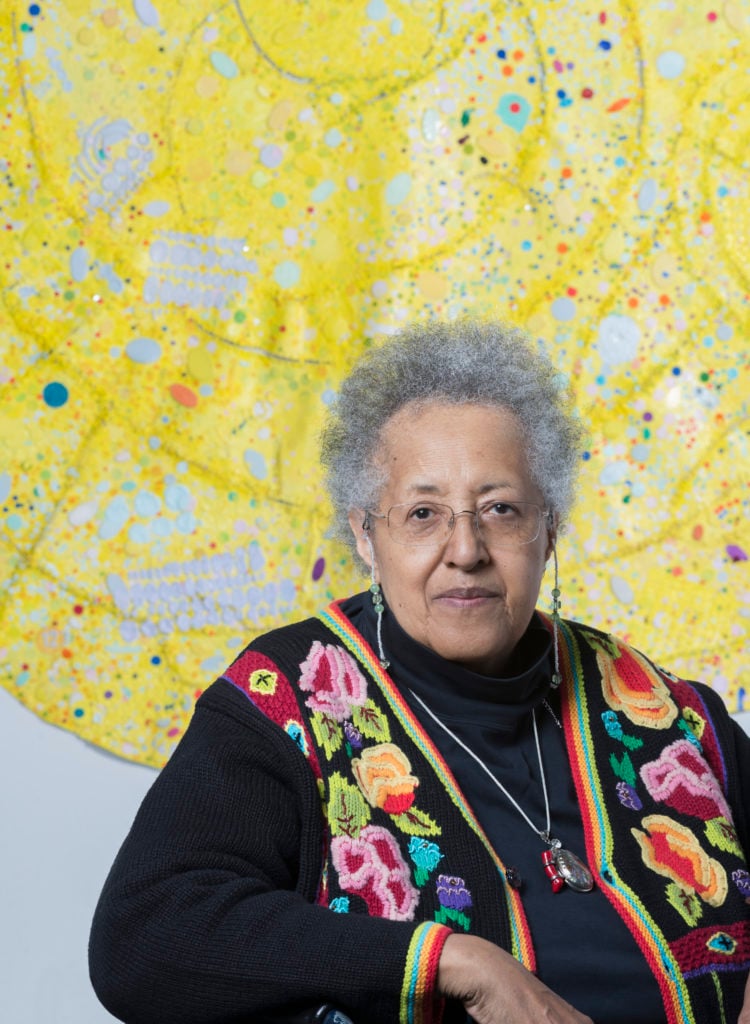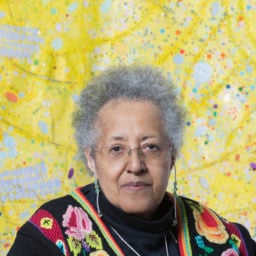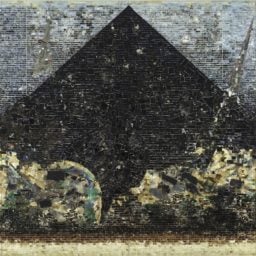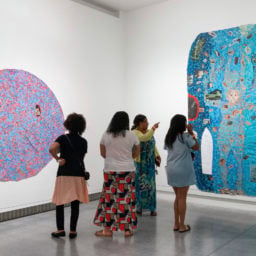The American artist Howardena Pindell arrived in London for her first solo show in the UK just as the 45th US President landed for a state visit. A veteran activist and co-founder of New York’s pioneering feminist gallery collective A.I.R., Pindell tells artnet News that while her work is often political, Donald Trump will never appear in her art. “I don’t want him to engage me,” she says.
Born in Philadelphia in 1943, Pindell studied painting at Boston University and Yale. In 1967, she became one of the first black women to join the curatorial staff of New York’s Museum of Modern Art. During the 12 years she worked at the museum, she continued making art, developing an abstract methodology based on grids of punched-out circles through which she applied acrylic paint to build up shimmering surfaces of color on a shifting grid.
Pindell stepped down from MoMA in 1979, shortly after protesting the use of racist language in an exhibition at New York’s Artists Space. The same year, she suffered a near-fatal car accident: the experience cemented her sense that it was urgent to use her voice to make work and speak out. Her video Free, White, and 21 (1980) presented her experiences of overt and systemic racism, and the dismissive responses she had received from white colleagues.
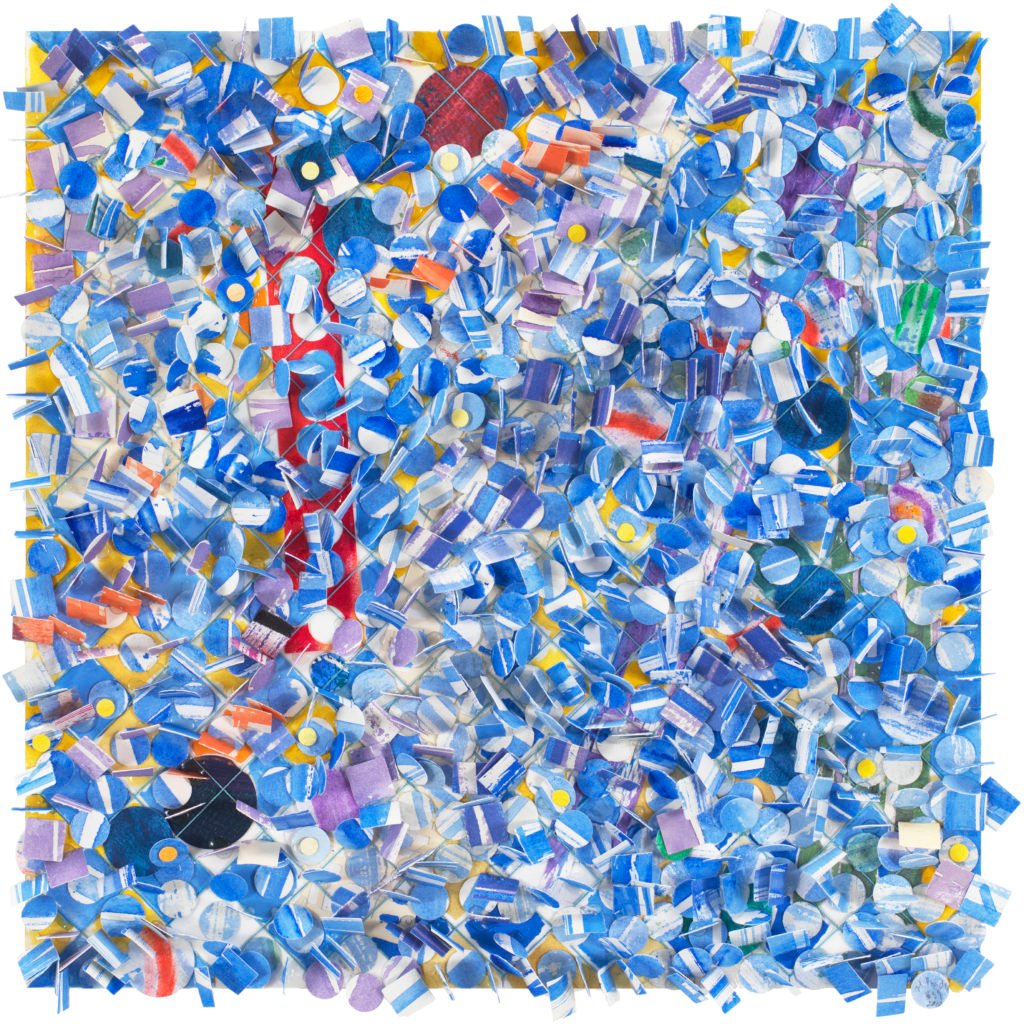
Howardena Pindell, Untitled #59 (2010). © Howardena Pindell. Courtesy the artist, Garth Greenan Gallery, New York and Victoria Miro, London/Venice.
Pindell, who has taught at the Stony Brook University in New York since 1979, continues to make both abstract and issue-led work. Last year, she was the subject of the major touring retrospective “Howardena Pindell: What Remains to Be Seen,” organized by the Museum of Contemporary Art, Chicago. We spoke to the artist about the evolution of her work, her plans for her legacy, and her distaste for Trump on the occasion of her first solo exhibition in London, which opens this week at Victoria Miro Gallery.
A lot of us in Europe are better acquainted with your issue-led work and your activism. What’s the relation between that and your abstract work?
I try to do it to balance out what I’m doing, because doing the research on the issue-related work can be very frightening and very upsetting. So I do both at the same time. The next video I’m doing is about lynching, the civil rights era, and slavery, and I will be the voice. The material is really upsetting, so at the same time, I’m working on the abstract [painting].
I see Free, White and 21 getting shared a lot by students. Do you feel the issues that you were discussing in 1980 are still very relevant to your students?
My students aren’t necessarily aware of the video. I basically teach painting. Where it comes into the classroom is other professors show it: the art historians. Occasionally it’s shown around New York City. For a while, it was on YouTube and then my distributor took it off. I don’t mix my politics in with my teaching. I mean a lot of people are very upset about Trump: it’s almost like an unspoken sadness.
The opening of your exhibition here, of course, coincides with Trump’s state visit.
I’m glad he’s not interested in culture. He has not made any forays into the cultural world, whereas Hitler was an artist, and if you did not live up to his standards for Nazi art you were considered degenerate.
Trump has put artists who are politically engaged in a very particular position: it’s given them a really urgent role.
I’m staying away from Trump as subject matter, because I don’t want him to engage me. I don’t want anything to do with him, but I’m empathetic with others who feel very afraid of where we’re headed with him, especially if he gets a second term.
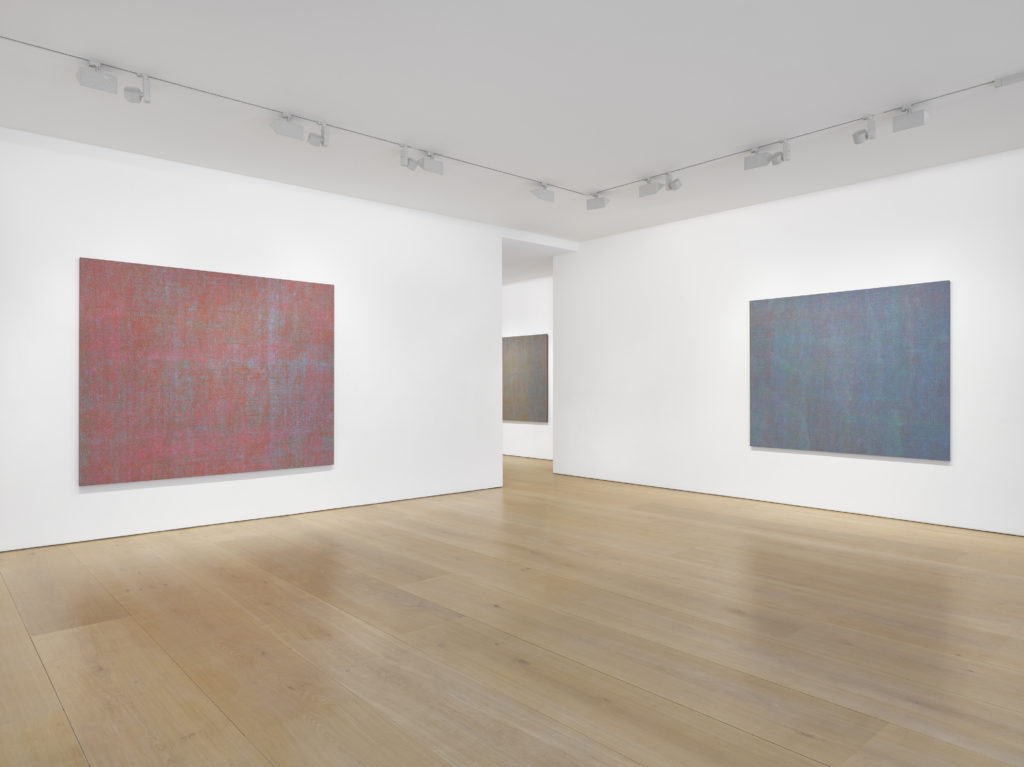
Installation view of Howardena Pindell’s exhibition at Victoria Miro. © Howardena Pindell. Courtesy the artist and Victoria Miro, London/Venice.
What did you decide to include in your first London show?
Victoria [Miro] and Garth [of Garth Greenan Gallery, Pindell’s New York dealer] chose to show early work from the 1970s, and then later work on paper, where the circle has migrated from the canvas to actual punched large circles.
Do you make works with the express intention of punching them out for assemblages or do you re-use older works?
No, I make drawings intentionally to destroy them. That’s not true of my earlier work where I made drawings that stood on their own merit. Now the drawings I do are very abstract and playful: I destroy them and re-assemble them in a three-dimensional way. I use thread also. It’s all about playing.
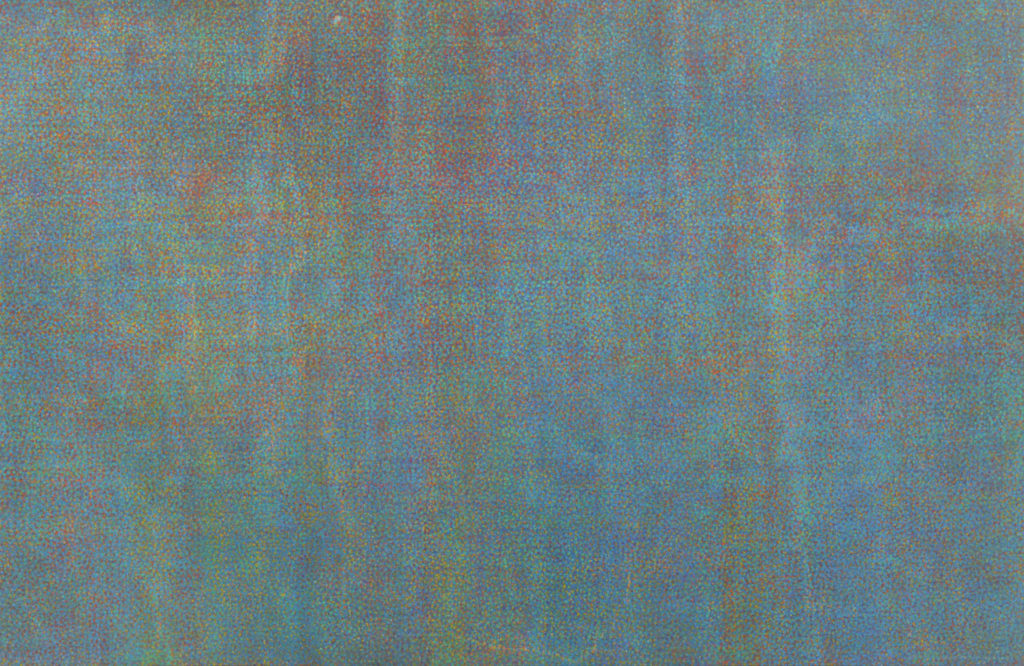
Howardena Pindell, Untitled (1972). © Howardena Pindell. Courtesy the artist, Garth Greenan Gallery, New York and Victoria Miro, London/Venice.
The thread relates to your interest in the grid, which comes right from your earliest abstract work.
The early interest in the grids was kind of sarcastic, because everyone was interested in structuralism, the golden mean, and the grid and so forth. In a form of rebellion I made a portable grid: literally a grid held together by big grommets. I enjoyed working on graph paper, but I think the early influence in that was my father, who was a mathematician. I remember seeing him write numbers in a journal that had a grid: he liked to record his mileage. I was a child. They didn’t mean anything to me. I saw numbers as functional, but also I saw them as beauty.
You’ve also made serial works using numbers.
Some people would almost think of them as conceptual. I literally saved all the holes I had punched for the paintings that are in the show. An art dealer had come to see my studio and blindly said, “How many circles on the painting?” I started to count them. I had bags of these circles. I would collect them and then I would get graph paper and use matte medium and attach the dots on the graph paper sequentially. Sometimes, depending on the density of the numbers, they would cluster and create shapes or forms.
That also happens with the early paintings you’ve done through stencils: in places it feels like there’s pointillist form emerging as well.
That’s interesting. Yes, when I worked at the Museum of Modern Art I was very interested in pointillism but I also found inspiration with the color in [Odilon] Redon: in his pastels of flowers, the color was so beautiful. I was really trained as a figurative painter, as an academic painter. Then I made this break into using the circle. I started making drawings on graph paper and spraying the drawings with acrylic.
When your retrospective opened last year, MCA Chicago put a lot of your writing online as an open archive. Are you working toward making more available to view through a foundation or archive?
At the Smithsonian my papers will be in the Archives of American Art. That’s already been decided, and Garth [Greenan] will be my art executor. What I’m aiming for is to have a philanthropic foundation, so as [work] sells, [grants] will go out to different charities after I’m gone.
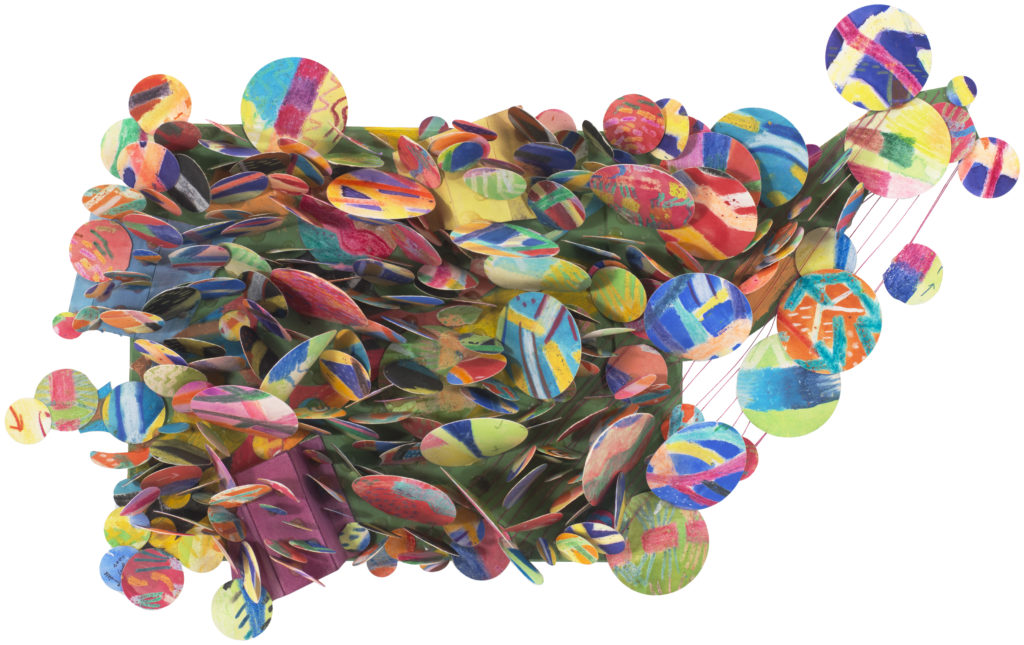
Howardena Pindell, Untitled #88 (Dragon) (2007). © Howardena Pindell. Courtesy the artist, Garth Greenan Gallery, New York and Victoria Miro, London/Venice.
How did you feel about that show at the MCA Chicago?
I was stunned when I saw it. Thirty years ago, I’d probably be very ecstatic, but now I’m more stunned, because I’m old. I’ve had so many different kinds of responses to my work.
Do you still? Or do you feel that time is catching up with you?
Every now and then, maybe there’s a pop or squeak, but it’s interesting to see work that was put down 30, 40 years ago, that now people are able to tolerate and see.
What do you think’s changed?
I have no idea. The work’s still the same. Maybe the eyes are different? Maybe just the way things have changed has made them different?
“Howardena Pindell” is on view from June 5 through July 27 at Victoria Miro in Mayfair, London, 16 St George Street, W1S 1FE.
